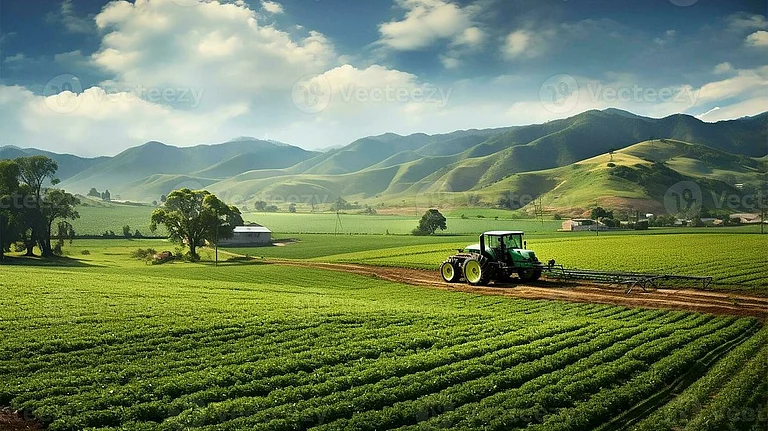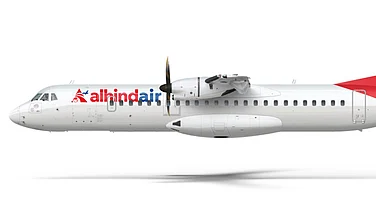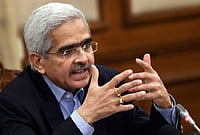If there is something that the Union Budget 2023-24 has emphasised on, it is the country’s increased focus on higher capital expenditure and ‘Aatmanirbhar Bharat.’ With the country ramping up its efforts towards becoming a $5 trillion economy, industries like the fertilisers and petrochemicals’ strategic importance in the India growth story, can’t be ignored.
Deepak Fertilisers and Petrochemicals Corporation Limited (DFPCL) is one such company that has established a prime position for itself in the India growth story. As the country’s leading producer of fertilisers and industrial chemicals, and having a dominant position in South East Asia, DFPCL is also familiar with the sector’s challenges. In an exclusive conversation with Outlook Business, Sailesh C. Mehta chairman & managing director (CMD), DFPCL and Amitabh Bhargava, president and chief financial officer (CFO), Deepak Fertilisers elaborate on the company’s growth plans, India’s ‘Aatmanirbhar’ aims and the support measures required from the government. Edited excerpts:
As per studies, the global ammonium nitrate market is expected to touch $26,887 million by 2027. As a market leader in this space, how dominant do you think will be India’s role in this growth?
(CMD) - In the Indian context, it is important to intelligently bifurcate ammonium nitrate – one, it’s being mostly used in the mining sector and second, it is domestically focussed due to huge needs and demands. So, we as producers of ammonium nitrate, which is a great enabler, are also focussing on these aspects to ensure that India attains a sense of leadership in this and associated spaces. Keeping this in mind, our Gopalpur TAN project, as you know, is emerging where we are seeing very positive currents, especially those aligned with the country’s growth story. All these aspects are driving DFPCL to chalk out a world capacity plan, one that will propel us to be a part of the world’s top three in ammonium nitrate space, especially from the mining sector’s point-of-view (pov).
With all this happening, we are also looking at immense savings for this sector. Since the value proposition is phenomenal, we are also working through our journey from commodity to specialty while bringing the TAN sector more in picture. So, the narrative is now more about ‘from customer to consumer,’ to make sure we bring value there.
Having said this, we also have a broader perspective when it comes to the finer nuances of government’s ‘Aatmanirbhar’ and PLI approaches. Both these things have been consorted to bring ground-level impact, one that could really come from larger investments in the domestic sector. However, all this is getting held back due to a lack of clarity.
To put it simply for you, the government needs to come up with some consistent clarity on the level of investments and resulting returns. For instance, if we look at the fertilizers sector, we know that huge amounts of raw materials are being imported and finished fertilizers are being exported. All this in fact, has zoomed in the light of total subsidies also climbing.
So, again, there are two aspects of this – one, the government needs to come up with clarity that if someone puts investments in the fertilizers sector, there will be reasonable returns as well, and second, is the fast PLI support for raw materials like ammonia and nitric acid in this sector. As far as TAN goes, the funny bit is that at present, there is a ban on exports of Ammonium Nitrate and so, all floodgates are open to imports. Isn’t this contradicting the ‘Aatmanirbhar’ philosophy? When it comes to this sector, we need attention from a broader perspective as this is the sector that will fuel growth in the whole mining sector. And if we are looking at world class products, India must make a name for itself by supplying them to the world.
So, as concepts, ‘Aatmanirbhar’ and PLI scheme are extremely important and good but if some of these ground-level aspects are not given enough attention, the growth may get slower.
Your Ammonia facility plant at Taloja was expected to be commissioned by Q1FY24. What is the update on that and how does it add to DFPCL’s growth story?
(CMD) - As far as the physical progress of the Taloja project goes, it is moving at a really fast pace and most of the construction is done as equipments have also been placed. So, we are thick into the pre-commissioning stage and soon, we will merge into the commissioning activities as well. The baby will be born, ammonia will emerge! (smiles)
Can you put a date to it?
(CMD) - We are trying to keep some elbow room, of a couple of months because between pre-commissioning, commissioning and ramping up the full production – things take time. So, Q1 should be good for now. Since you asked me from a business perspective as well, I will explain you briefly.
We are investing close to Rs 4,500 crore in the ammonia project as for all our three major sectors (industrial chemicals, fertilizers and mining chemicals), the key raw material is ammonia. So, from this standpoint, the ammonia project is virtually for captive use and that also gives some assurance of the returns as we don’t need any marketing. Somewhere, along the lines, we are also seeing freight cost going down due to proximity. So, in terms of freight economics, we will save anywhere close to $75-$80/tonne.
The plant is also based on the world’s best KBR technology. So, even in terms of the solidity of the project, execution and quality controls, we are seeing another ‘best’ coming up. The project on its own has attractive returns and will be a huge risk mitigator for the downstream, especially for the troubles related to imports of ammonia and congestion at the ports. With this, we are also looking at significantly reducing the carbon footprint. So, this will be a very solid, stand-alone project because one critical raw material will now be in the fold of Deepak Fertlisers (DFPCL).
For the off take and supply of Nitric acid, you signed a contract with Aarti Industries Ltd., and this alliance projected very strong growth currents coming from ‘China Plus One’ trend. Is Deepak Fertilisers planning any more alliances in the near future?
(CMD) - When we saw interest from Aarti Industries, we were also up for it because they are at the next step in terms of speciality. So, the next step is growth in a positive current, one that we are now seeing emerging out of the ‘China Plus One,’ which you rightly mentioned. To put it simply, India is definitely becoming an attractive location for global supplies and growth and for us, the linkage to the nitric acid also brings a clear alignment with the India growth story. We are also on a lookout; so, if something strikes, we will be keen on that association as well.
From May 1 2023, a deal is taking shape where Deepak Fertilisers will buy natural gas from Gujarat State Petroleum Corporation for three years. Is this step aimed at contributing to the country’s ‘Aatmanirbhar Bharat’ story?
(CMD) - From the ‘Aatmanirbhar’ or ‘import substitution’ view, DFPCL’s ammonia project is expected to contribute almost Rs 25,000 crore in a 10-year period. Having said this, with this tie up and some others, we are almost looking at 40-42 per cent of the requirement fulfilled and for the balance; we are also eyeing multiple sources. Our understanding also tells us that we are looking at some very interesting long-term needs as we expect more LNG facilities to emerge. All this will be contributing to ammonia and since that is taken care of, we will automatically be contributing towards ‘Aatmanirbhar Bharat.’
(CFO) – If you see the way gas prices are, they are coming down. But KG Basin being a high cost driver requires sectors that can withstand consuming this gas. So, it’s essentially ammonia, city gas distribution, fertilizer and so on – all these sectors that would consume this gas. As per my understanding, we are going to be a major consumer of this gas for at least next three to five years and if it’s available for a longer period, we would certainly want that as well.
In Q3, the TAN volumes were impacted by sudden demand in non-coal segment. What is the outlook on that now?
(CFO) – In the infrastructure segment, you could see that in the last one or two quarters. As far as the blip goes, you could see it only in a particular quarter; so, I believe it is temporary. If we see directionally, we don’t see any challengers as even the government has announced a huge capex in Budget 2023. In fact last year, TAN witnessed almost 1,60,000 tonnes of additional demand. So, with this level of investments from both government and private sector, we could see 8-10 per cent growth in the infra segment.
Please help me understand the company’s debt portfolio especially as there is more capex in the pipeline.
(CFO) – If you see our December-end figures, they show that we had a net debt of about Rs 1,990 crore and almost Rs 3,400 crore of debt. This is because we were sitting on a cash balance of roughly Rs 1,500 crore. So, from a debt-equity perspective, we are below 0.5. Now, as you know, we are almost at the verge of completing our ammonia project and the capex for that is roughly Rs 4,500 crore. We’ve already taken debt worth around Rs 2,000 crore. So, in practical terms, the net debt, sitting in our balance sheet is only due to the ammonia capex, which will also start generating revenue soon. As far as rest of the company goes, it is possible for us to use all our cash to pay all our debt! So, from this perspective, I think we are in a fairly good shape.
Another thing, we have our Gopalpur project where we have roughly another Rs 1,500 crore debt. But this amount would come in three years’ time and on an average, we are paying almost Rs 250-300 crore of debt every year. Most of our debts have been taken for 19-20 year door-to-door kind of maturity. So, even the pressure to repay this debt is spread out over a period of time.
DFPCL has been aiming towards pricing its products in a manner that protects its margins despite uncertainity on raw material costs. On the backdrop of the continuing war and the year that has been, how much has this aim shaken?
(CMD) - From a broader perspective, the movement of raw material prices and finished products are largely in tandem. So, the delta between these two is expected to be fairly decent, as per our understanding and the good thing is that our strategy of moving from commodity to speciality is also coming into play. All this will help bring a certain degree of premiums in all the sectors we deal with. If I put it simply for you – we will have more delta and more contribution margins emerging from the shift of commodity to speciality. From this viewpoint, there could be hiccups for a month or two but we will attain a certain semblance, which is the equilibrium. More so, the world is getting to a stage where it is accepting that for some time, the Russia-Ukarine war is here to stay and this is why, issues related to supply chain and even other aspects, are slowly settling. So, we don’t see this being some kind of shock treatment.
During COVID, as an undercurrent, we have also realised that despite the hike in prices, the demand of our finished products did not shake. This tells us that the resilience is strong and because of our alignment with the India growth story, demand has remained extremely strong.
(CFO) – I think in long term, no business is completely isolated from what’s happening in the outside environment. The real question is – if you get a headwind, can you withstand it? Fundamentally, DFPCL is doing things aiming towards the long-term. So, we are placed well to withstand any headwinds for one or two quarters. Another thing, in this whole process of transitioning from commodity to speciality, our market share has grown closer to the customer. So, these things will hold us in good stead, especially in terms of the kind of profitability margins we take, even in short-term.






























